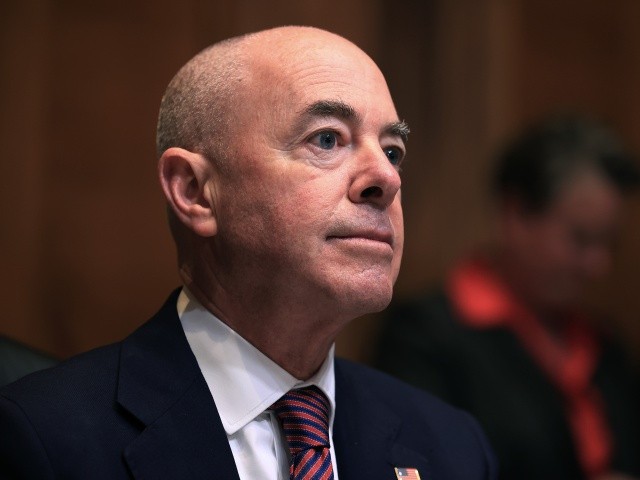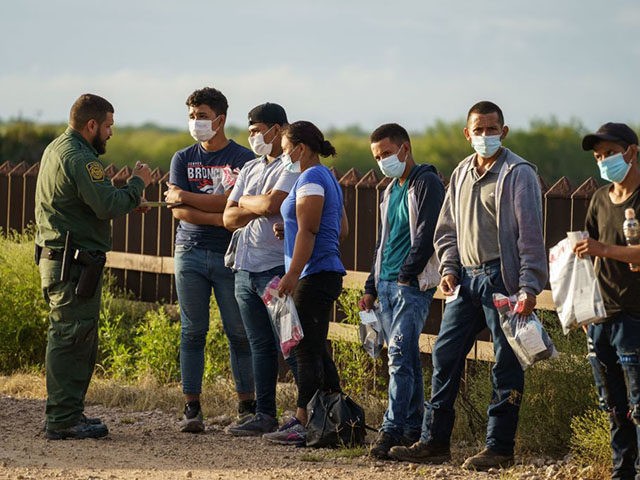The Department of Homeland Security will restart President Donald Trump’s “Remain in Mexico” program as soon as this week because of a court order, border agency officials told media outlets.
“The Biden administration is expected to restart the Trump-era ‘Remain in Mexico’ border policy next week, according to a senior administration official,” said a November 24 report on CNN.
“President Biden will start turning asylum seekers back to Mexico as soon as this week under a reinstated Trump-era ‘Remain in Mexico’ program — but will offer them the option to receive the COVID-19 vaccine,” Axios reported November 24.
The partial revival of RIM is being forced by a Texas judge, Matt Kacsmaryk. In August, Kacsmaryk directed Department of Homeland Security Secretary Alejandro Mayorkas to restore the Migrant Protection Protocols or else detain all asylum-seeking migrants until their asylum claims have been decided. Agency officials decided to to revive the RIM policy instead of building detention centers for the migrants.
But the federal law and Trump’s RIM policy are deeply opposed by various border officials, including Mayorkas, the pro-migration DHS chief. Mayorkas has already declared his intention to cancel the RIM programs if higher judges dismiss Kacsmaryk’s decision.

Homeland Security Secretary Alejandro Mayorkas testifies before the Senate Appropriations Subcommittee on Homeland Security on Capitol Hill on May 26, 2021, in Washington, DC. (Chip Somodevilla/Getty Images)
However, White House officials seem to have welcomed the Kacsmaryk decision. It gives them political cover to reduce the poll-damaging flow of migrants into Americans’ homeland, despite protests from their pro-migration allies.
However, administration officials, including Mayorkas, will try to minimize the scale of the RIM program in 2022.
Officials are also negotiating with Mexico’s government, which knows that uncontrolled migration is politically poisonous for President Joe Biden. Officials in both governments are conducting secret talks about the rewards that Mexico is demanding for allowing the RIM program. Those rewards likely include a renewed flow of Mexican workers into the jobs needed by Americans.
Immigration advocates oppose the RIM policy because it sends migrants back to camps in Mexico until their scheduled days in U.S. asylum courts. This return policy wrecks the cartels’ smuggling business because it prevents most of their clients — adult men, their families, and working youths — from using fake asylum claims to get legal entry and jobs in the United States.
The cartels, however, can still make money by smuggling men and young women through the scrubland alongside the border.
But many migration lawyers and progressives say that any migrant is entitled to ask for asylum and get a temporary job in Americans’ national labor market, no matter how weak their plea for asylum is. For example, Mayorkas told a Senate panel in November that Americans cannot have a secure border unless migrants also get “justice” in U.S. immigration court.
“Justice is our priority,” Mayorkas declared at a Senate hearing, adding, “That includes securing our border and providing relief to those [migrants] who qualify for it under our laws.”
Mayorkas opposes the cartels. But he is seeking to replace their illegal smuggling with a variety of government programs that stealthily extract foreign workers and consumers from their home countries for use in the U.S. economy.
For example, Mayorkas is helping teenage economic migrants walk into jobs via a side door created in a 2008 law for victimized children. He is helping older migrants stay in the United States by letting them use the same 2008 law — and refugee rules — to pull their left-behind children up into the United States.
Mayorkas is also using his parole power to invite lawfully deported migrants to rejoin their left-behind migrant children who are applying for asylum. He is using the U Visa program to provide work permits and Social Security numbers to migrants who say they were victimized by a crime in the United States.
On June 16, Attorney General Merrick Garland announced new asylum rules that would offer citizenship to people who claim they are persecuted by abuse from their spouse. Garland’s deputies also revived the claim that judges can use “administrative closure” to shut down deportation cases, so allowing illegal migrants to stay legally.
In 2021, Mayorkas and his deputies have allowed roughly 1.8 million migrants into the United States. This huge population is roughly one migrant for every two American births, and it includes visa workers, legal immigrants, asylum seekers, refugees, paroled Afghans, and illegal migrants.
In the United States, migration curbs Americans’ productivity, shrinks their political clout, and widens regional wealth gaps. It radicalizes their democratic, compromise-promoting civic culture, and allows elites to ignore despairing Americans at the bottom of society.
For many years, a wide variety of pollsters have shown deep and broad opposition to labor migration and the inflow of temporary contract workers into jobs sought by young U.S. graduates. This opposition is multiracial, cross-sex, non-racist, class-based, bipartisan, rational, persistent, and recognizes the solidarity Americans owe to each other.

COMMENTS
Please let us know if you're having issues with commenting.